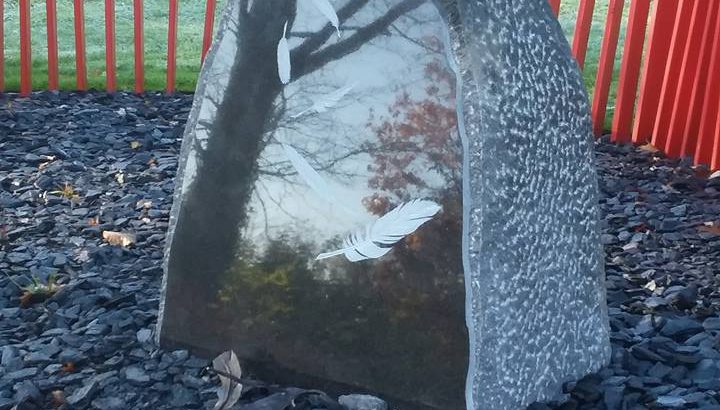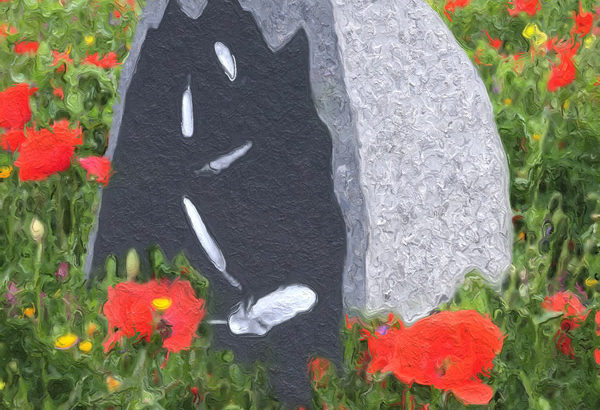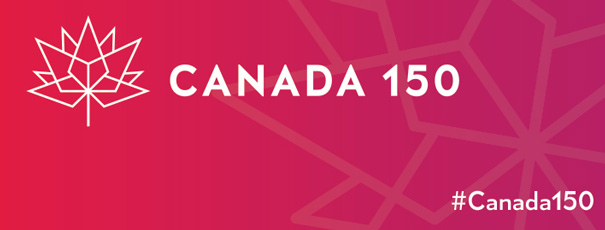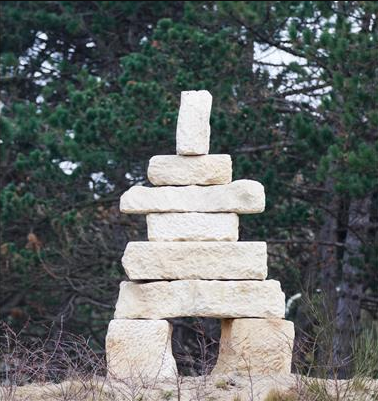Category: Uncategorized

The Commission of The Passchendale Project
The Passchendaele Project
The project is commissioned by the Memorial Museum Passchendaele 1917 for the Legacy of Passchendaele project. The Passchendaele Memorial Gardens consist of seven gardens in the shape of a poppy flower intended as memorial gardens for nations who fought in Flanders during the Great War. Each garden focuses on three items referring to remembrance: plant symbolism, poetry and visual art.
One of these gardens is dedicated to Canada. The museum received a grant from Veteran Affairs Canada to create it, and the garden is reaching its completion with the installation of the sculpture by Heather Carroll the beginning of November. The basic concept of the sculpture is that is serves as a symbol of the many Canadian First Nations, Métis and Inuit, who were also involved in the war, and that it would be representative to all of them. Heather is an accomplished sculptor of Inuit origins and was chosen to execute the work.
Included in the installation will be the plants, referring to the six major ecoregions in Canada, and the poetry element, being an extract from ‘Passchendaele’, a poem by Harry Amoss.
Heather’s work brings the feather into play. The feather symbolizes trust, honour, strength, wisdom, power and freedom. They are carried by the wind and bring messages of hope and victory. Inuit believe in SILA, she is the wind, the sun, the moon, she is all powerful. Each feather in this work is cradled by SILA as they journey to their resting place. Their departure from the world of the living, entering the other world of our ancestors.

The Paschaendaele Project
I spent a great deal of time meditating on what symbol I could possibly use that would reflect the spirit of those indigenous soldiers that fell during the Great War in Passchendaele.
The feather soon became the clear symbol. Feathers play an important role in my work. Amongst many things, the feather symbolizes trust, honour, strength, wisdom, power and freedom. They are carried by the wind and bring messages of hope and victory. Inuit believe in SILA, she is the wind, the sun, the moon, she is all powerful. Each feather in this work is cradled by SILA as they journey to their resting place. Their departure from the world of the living, entering the other world of our ancestors.
The work is comprised of a granite monolith which will be rough hewn on the rear and summit or crown. The front surface will be cut and polished on a 60° angle. It represents the rough terrain that the soldiers had to battle through, the craters, the scars of the bullets fired, the muddy hills they fought and died for. Feathers will be engraved into the polished surface of the stone. They will appear to be falling to the ground representing the fallen soldiers. At the foot of the stone will be cast iron feathers. These will be anchored into the ground with metal rods. There will be three. Thereafter, I plan to have other three dimensional feathers cast in iron, scattered throughout the garden, again representations of the fallen soldiers. These too will be anchored into the ground with reverse prong pegging. They will rust in time, a desired process.
The inauguration will take place on November 9th. Photos of the event will be posted thereafter. In the meantime herewith an artist’s impression of the work created by extremely talented photo artist Carol Abel using the 3 dimensional simulation provided by the firm contracted to engrave the feathers.

Canada 150 at Cercle Cité Luxembourg
2017 marks a significant moment in the History of Canada. 150 years ago, Quebec, Ontario, New Brunswick and Nova Scotia united to create the Canadian Confederation, called the Dominion of Canada. On account of the British North America Act that became law on July 1st 1867, these British colonies would be recognized as an independent nation. In the years that followed, the other provinces and territories joined the Dominion, making today’s Canada “a mari usque ad mare” (“from sea to sea”).
The 150th anniversary of Confederation gives us the opportunity to celebrate together our shared values and our country’s place in the world. The major themes of the 150th anniversary of Confederation are diversity and inclusion, reconciliation with Indigenous peoples, environment and youth.
The following video is the speech that was given in Cercle Cité, Luxembourg City, Luxembourg.

New Website
This is my new Website. Hello Everyone. Heather Carroll





